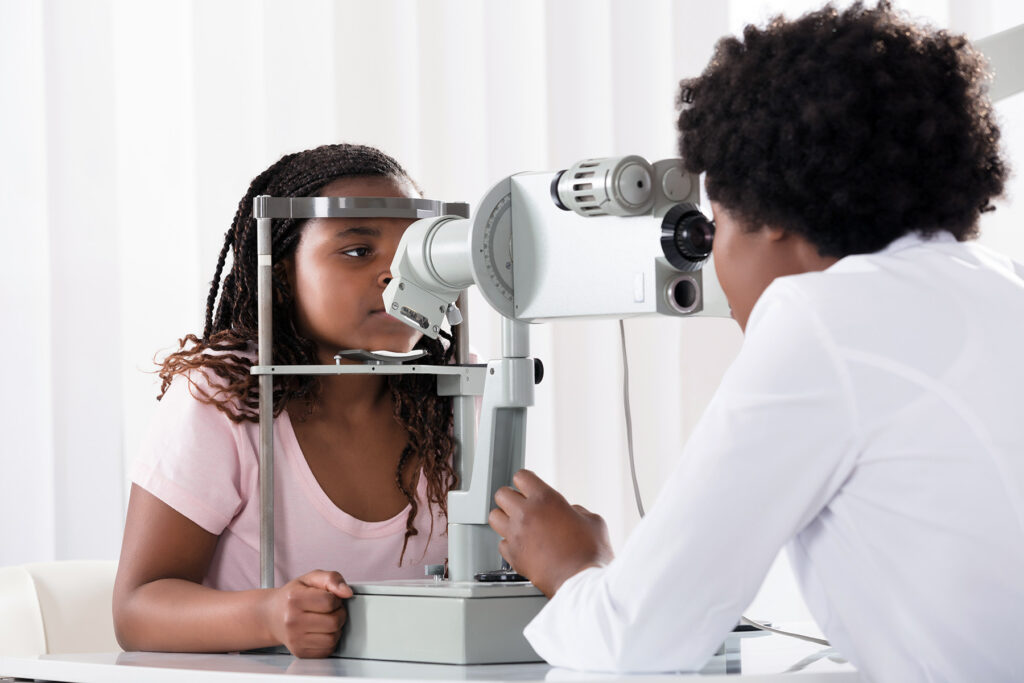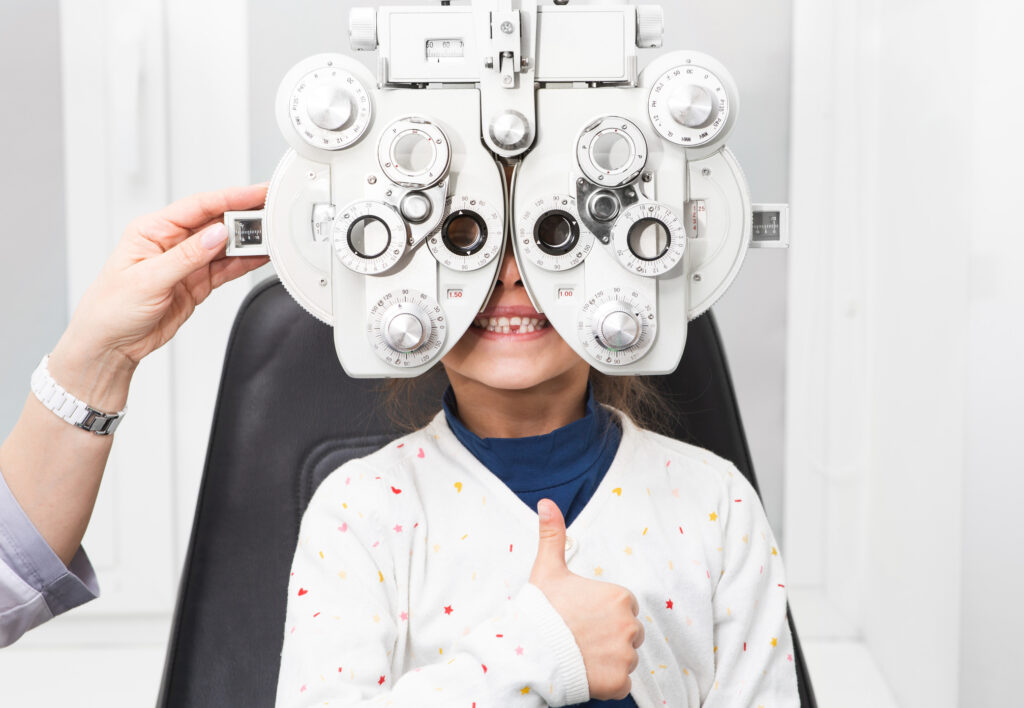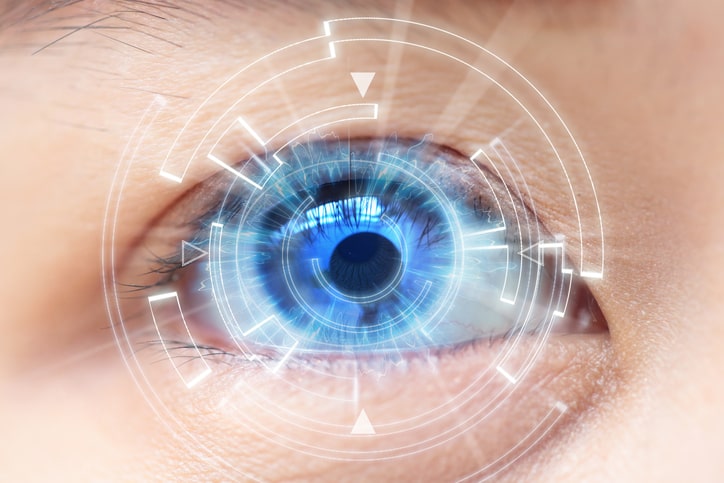Orthokeratology uses gas permeable (GP) lenses to reshape the cornea, primarily for myopic correction. This technology has traditionally benefited adults looking to shed corrective lenses during the day. Increasingly, OrthoK is recognized as an effective method of myopia management in children and adolescents.
To give children the greatest chance of having the shortest axial length/lowest prescription with the fewest long-term health risks, eye care professionals must start myopia management from a very young age. The youngest patient I’ve prescribed OrthoK to was 7.
There is currently a global myopia epidemic, and preventing children from ever developing high myopia is of great concern. Although OrthoK is an important part of the myopia management armamentarium, successful deployment of OrthoK has specific requirements to ensure efficacy and safety. Keys to success include additional professional self-training, staff and patient education, and having proper instrumentation to assist in and troubleshoot OrthoK fits, as well as to monitor myopic progression.
Consequences of High Myopia
The consequences of high myopia go beyond the annoyances of thick spectacle lenses. High myopia is associated with comorbidities such as early onset cataract, glaucoma, retinal detachment, and macular degeneration.1,2
OrthoK addresses myopia by creating a peripheral defocus retinal cue that slows myopic progression.3 While myopia correction is the main use for OrthoK, advanced lens designs make it possible to also correct for hyperopia and regular astigmatism.
Bringing OrthoK success to your practice starts with professional training. Immersing yourself in OrthoK design is more accessible than ever, but one must begin with a fundamental understanding of basic GP lens design and of corneal topography.
Continuing education events as well as contact lens laboratory consultants and self-study will prepare you to perform OrthoK successfully. To make it a success for your practice, you must educate your staff and patients on the process and benefits of OrthoK. Investing in a quality topographer and an instrument for measuring axial length is also a requirement.
Complications and Techniques to Address Them
OrthoK utilizes contact lenses, so many of the associated risks are shared. For example, improperly fitted lenses may result in corneal staining and abrasions that are indicative of damaged epithelial cells. Poor fits may be resolved by changing the lens parameters to increase the sagittal depth and/or to relieve lens binding. If the lenses are decentered, conjunctival staining may occur. Superior decentering indicates that the lens fit is too flat, whereas inferior decentering suggests the opposite, that the lens fits too steeply. In the case of the former, increase the sagittal depth, and vice versa for the latter.
In other situations, corneal staining may be resolved by applying artificial tears before removing the lenses after overnight wear and generally ensuring that lenses are kept free of deposits, by using an effective lens cleaner. Improper or ineffective cleaning of the lenses may result in papillary conjunctivitis and/or corneal infiltrates.
An effective cleaning regimen, combined with good contact lens wearing and handling habits, can mitigate against the possibility of microbial keratitis (MK). Although oft cited as a risk of OrthoK treatments, the risk of MK is not higher with OrthoK than with any other contact lens modality.4
OrthoK: Adolescents vs. Adults
Fitting OrthoK lenses on adolescents and adults has many similarities and a difference. When treating kids with OrthoK, both the child and the parents need to be educated on contact lens handling and hygiene. As a consequence of the corneal reshaping, patients may experience flare, glare, and reduced contrast sensitivity from higher-order aberrations. These aberrations tend to impact children less and may actually increase the effectiveness of the myopic treatment in kids.5,6 In both children and adults, these symptoms usually resolve with treatment progression. If adults continue to experience these issues, consider changing the diameter of the treatment zone.
Bringing OrthoK into your practice is professionally rewarding and beneficial for patients. OrthoK success is directly proportional to the size and quality of the investment in it. With greater experience, higher amounts of myopia can be addressed along with hyperopia and regular astigmatism. The expertise gained will not only distinguish you and your practice; it will also make an impact on the myopia epidemic.
References
1 Grossniklaus, H. E. and W. R. Green (1992). “Pathologic findings in pathologic myopia.” Retina 12(2): 127-133.
2 Saw, S. M., G. Gazzard, E. C. Shih-Yen and W. H. Chua (2005). “Myopia and associated pathological complications.” Ophthalmic Physiol Opt 25(5): 381-391.
4 Bullimore, M. A., L. T. Sinnott and L. A. Jones-Jordan (2013). “The risk of microbial keratitis with overnight corneal reshaping lenses.” Optom Vis Sci 90(9): 937-944.
5 Hiraoka, T., J. Kotsuka, T. Kakita, F. Okamoto and T. Oshika (2017). “Relationship between higher-order wavefront aberrations and natural progression of myopia in schoolchildren.” Sci Rep 7(1): 7876.
6 Lau, J. K., S. J. Vincent, M. J. Collins, S. W. Cheung and P. Cho (2018). “Ocular higher-order aberrations and axial eye growth in young Hong Kong children.” Sci Rep 8(1): 6726.





